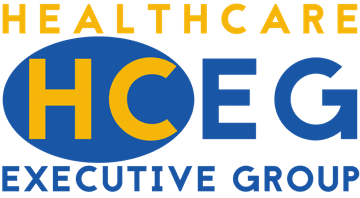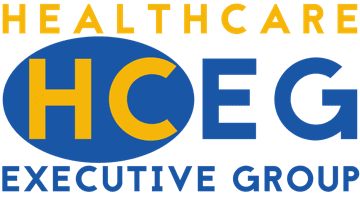AHIP 2016 was held last week in Las Vegas, NV at the Wynn hotel & casino. It was an excellent turnout from an attendee audience perspective solid representation across payer and provider organizations as well as business and IT participation from departmental manager to CEO and vendor community support. Below are the insights and outcomes of an executive roundtable meeting that discussed data integration challenges and opportunities in healthcare hosted by MarkLogic, a leading operational and transactional Enterprise NoSQL database provider powering numerous healthcare digital transformation projects and data silo integration / aggregation strategic initiatives for payers, providers and health IT vendor platforms.
The following research and information is summarized and de-identified to respect the confidentiality of the executive roundtable audience and their respective organizations. The organizations represented included market leading payers, providers, health IT vendors and consultants. Audience titles ranged vertically from director to CEO and horizontally from clinical, administrative, financial, product, operations and IT functions. The prevailing executive roundtable observation and summary insight, after more than 90 minutes of discussion and debate on individual healthcare industry themes and use cases was that, breaking down data silos and developing an enterprise data layer or hub is fundamental to achieving any one of these strategic initiatives and use cases that are essential to our ability to innovate, modernize and survive.
The executive roundtable topics were sourced in part from the Healthcare Executive Group (www.hceg.org) 2016 Top Ten List (https://hceg.org/hceg-top-ten/) and direct industry field interactions. The HCEG 2016 annual forum is scheduled for September 12-14th in New York City.
While there are many levers to flip and knobs to turn to lead healthcare into the modern era of the new digital health economy, this executive roundtable discussion was primarily focused on the underlying data integration challenges holding back innovation created by decades of departmental purchasing of proprietary, standalone point solutions and developing or implementing applications using rigid relational technologies requiring expensive and resource intensive extract, transform and load (ETL) processes.
The stimulus for the executive roundtable audience provided a categorization of broad healthcare market initiatives shared across geographies and lines of business focused on the strategic themes listed below:
- Client Management
- Consumer Engagement & Retention
- Data Enablement & Infrastructure
- Network Management
- Payment & Reimbursement
- Population Health & Medical Management
- Quality, Accreditation & Compliance
The executive roundtable audience was asked to score and prioritize the degree of impact and importance data integration has on the strategic themes and initiatives listed above. The response scoring methodology, principles and process leveraged techniques from an acclaimed book on leading innovation called, Nail It then Scale It: The Entrepreneur’s Guide to Creating and Managing Breakthrough Innovation, by Nathan R. Furr and Paul Ahlstrom.
Some typical or common use cases aligned to the strategic themes / initiatives listed above were provided the simulation stimulus into give the executive audience context in their scoring consideration for data integration impact and importance. Use cases included, but were not limed to:
- Client Management Use Cases
- Client (group) contract management / search
- Client (group) onboarding
- Client (group) premium payments
- Product & policy administration
- Consumer Engagement & Retention Use Cases
- Consumer360 / Vision 2020
- Member communications
- Provider search
- Online enrollment / exchanges
- Data Enablement & Infrastructure Use Cases
- Enterprise data layer / digital transformation hub
- M&A integration
- Provider interoperability / health system integration
- Mainframe migration
- Re-platforming home grown apps (3rd party app conversions)
- Network Management Use Cases
- Provider contract management / search (FFS and VBR)
- Provider network management (enrollment, credentialing, etc)
- Payment & Reimbursement Use Cases
- Billing, payments and collections (premiums)
- Reimbursement (FFS, ACO, VBR, MACRA, etc.)
- Population Health & Medical Management Use Cases
- Care management, Disease Management, Utilization Management
- Risk management / stratification
- Data analytics / reporting
- Quality, Accreditation & Compliance Use Cases
- NCQA accreditation, audit & compliance
- URAC accreditation, audit & compliance
- STARS accreditation, audit & compliance
- HEDIS audit & compliance
- Fraud, Waste & Abuse and Special Investigations Unit (SIU)
The results of the executive roundtable audience scoring and prioritization the themes and use cases are below. The criteria for a minimum investment for an individual theme or initiative were $20 and the total budget available per audience member was $100. Investment per theme or initiative could be any amount between $20 – $100.
- #1 Data Enablement
- Average index score of $42.15 investment contribution
- High = $50
- Low = $25
- Insight: 70% of the audience put some form of investment in this category. This was a high frequency and high average monetary contribution area of priority for data integration.
- #2 Network Management
- Average index score of $35.00 investment contribution
- High = $60
- Low = $20 (minimum investment)
- Insight: 25% of the audience put some form of investment in this category. This was a low frequency but high average monetary contribution area of priority for data integration.
- #3 Consumer Engagement & Retention
- Average index score of $32.50 investment contribution
- High = $50
- Low = $20 (minimum investment)
- Insight: 90% of the audience put some form of investment in this category. This was a high frequency but average to below average monetary contribution area of priority for data integration.
- #4 Population Health & Medical Management
- Average index score of $30.63 investment contribution
- High = $40
- Low = $20
- Insight: 70% of the audience put some form of investment in this category. This was a high frequency but average to below average monetary contribution area of priority for data integration.
- #5 Payment & Reimbursement
- Average index score of $30.00 investment contribution
- High = $40
- Low = $20
- Insight: 80% of the audience put some form of investment in this category. This was a high frequency and below average monetary contribution area of priority for data integration.
- #6 Client Management
- Average index score of $26.25 investment contribution
- High = $40
- Low = $20
- Insight: 25% of the audience put some form of investment in this category. This was a low frequency and below average monetary contribution area of priority for data integration.
- #7 Quality, Accreditation & Compliance
- Average index score of $20.00 investment contribution
- High = $20
- Low = $20
- Insight: 15% of the audience put some form of investment in this category. This was a low frequency and below average monetary contribution area of priority for data integration.
In summary, there was strong agreement among executive roundtable participants that data infrastructure investments and enhancements were needed before additional application, investments and enhancements. To be specific, most executive roundtable participates agreed that their organizations needed an enterprise data foundation that is transactional, not just another static data warehouse, to integrate data across disparate sources and formats to run our business on before organizations could truly improve application performance, utilization and ultimately customer experience and satisfaction.
About MarkLogic
For over a decade, organizations around the world have come to rely on MarkLogic to power their innovative information applications. As the world’s experts at integrating data from silos, Mark Logics operational and transactional Enterprise NoSQL database platform empowers our customers to build next generation applications on a unified, 360-degree view of their data. Headquartered in Silicon Valley, MarkLogic has offices throughout the U.S., Europe, Asia, and Australia. For more information, please visit www.marklogic.com.
MarkLogic is a registered trademark of MarkLogic Corporation in the United States and/or other countries. All other trademarks mentioned are the property of their respective owners.
About HCEG
The HealthCare Executive Group is a national network of select healthcare executives and thought leaders, who navigate the tactical and strategic issues facing organizations today and provide a platform that promotes healthcare innovation and the development of life-long relationships. Originally the Managed Care Executive Group (MCEG), The HealthCare Executive Group (HCEG), was founded in 1988 by healthcare executives looking for a forum where the open exchange of ideas, opportunities for collaboration, and transformational dialogue could freely ensue. For more information, please visit www.hceg.org
Author: Bill Gaynor, Healthcare National Director at MarkLogic Corp.



